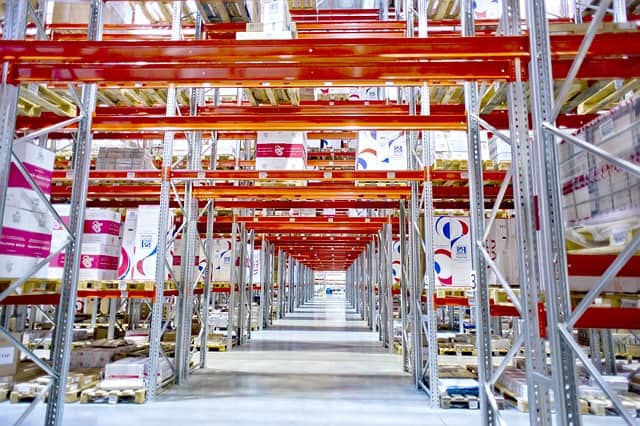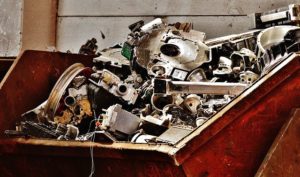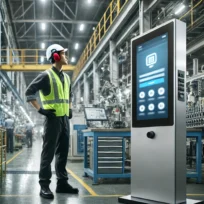The warehouse is a busy environment. There’s constant movement, plenty of materials to be handled, stored, assembled, packed, and delivered from one place to another; taking this into account, there’s a thin line between success and disaster that goes by the name of management strategy.
Everyone running a warehouse knows perfectly well unless there’s tailoring of the right strategy and establishing it for proper operation, one can’t hope on the desired outcome in terms of efficiency, productivity, and profits.
As a scope of many aspects, in addition to those I just mentioned, we can’t leave waste out of the equation. If you want to make the most of your warehouse, and turn it greener, you have to consider making the waste handling equipment investment.
Sure, the bits and pieces of material handling equipment are among your top priorities, but so should those that have to do with waste handling be, in the likes of wheelie bins, bin stands, bin lifters, forklift waste and wheelie tipping bins, and capacity rollover bins, as they can help you implement the perfect reducing, reusing, and recycling waste strategy.
This is important because it’s related to profits in general: the greener and cleaner your warehouse, the lesser the costs. Likewise, the lesser the bad impact on the environment, the safer your working environment would turn out to be.
When looking for and purchasing waste handling equipment, it’s your duty to pay attention on whether it meets the safety standards, and has undergone the adequate testing, not overlooking the materials it’s made of either, with particular focus on strength, durability, and properties such as resistance to chemicals, decay, frost, and the damaging UV rays, bearing in mind there are different types of waste, from packaging product leftovers, to oil, batteries, and chemicals in general.
Then, there’s also the aspect of equipment capacities to look into, so you ensure it’s the ideal match for your waste management requirements. This sort of purchase rids employees of the effort in doing so themselves thus decreases the chances of accidents too.
For instance, in case you’re dealing with emptying bins of up to 300kg, a safe and efficient system you can rely on is that of the Dumpmaster tippers, as they’re versatile (used in various applications even with food ingredients), easy to use, and can operate at any height.
When you welcome reduction of carbon footprint in the warehouse, it’s necessary to provide the employees with adequate training, so they would know all the ins and outs of properly using the bits and pieces of waste handling, and doing a bit of maintenance to increase their durability.
As I previously mentioned reduction, reusing, and recycling of waste, you have to think in terms of consumption and how you can reduce it to further make the strategy work. This can be both the energy and the resources, closely related to reusing and recycling. Take packaging materials as an example.
When you wisely choose the packaging materials, opting for biodegradable, you can manage to reduce the weight, and as a result reduce the shipping costs, and save energy in the distribution of materials around the warehouse itself. When it comes to other materials, like wood pallets, they are the advisable investment as they make for continuous reuse, so you end up cutting down on additional costs, including get to reduce the waste.
As for the recycling, when you purchase recycling packaging materials you make an eco-friendly decision since instead of sending them to the waste facilities in the end, you can send them to the recycling ones. Then there’s batteries, oils, and chemicals waste to take care of in an eco-friendly manner. You can count on a positive recycling outcome as long as each and everyone of the employees adopts the recycling habits. Recycling habits also have to do with cleaning habits altogether.
A cluttered warehouse isn’t only impeding operation from being carried out in a timely manner, putting the profits at stake, but also puts everyone’s life at stake as it makes for risky working conditions. To best make use of a cleaning plan, and have employees equally participate, it’s advisable to assign them all with a specific cleaning task once, or several times a week – this is something that’s everyone’s responsibility.
Another area where you can be more prudent about, in connection with energy consumption, is being mindful with the investment you make lighting-wise. Apart from finding the ways to have more of natural light (e.g. skylights), it takes turning the warehouse into one that’s fully LED-lighted to reduce the energy costs, and get the bulbs that last for years to come.
You can go as far as entirely relying on solar energy to power up those LEDs by installing solar panels, and use solutions like motion sensors for areas where illumination isn’t a constant necessity so there’d be light only when there’s movement around. Remember, eco-friendliness and a successfully operating warehouse go hand in hand.




